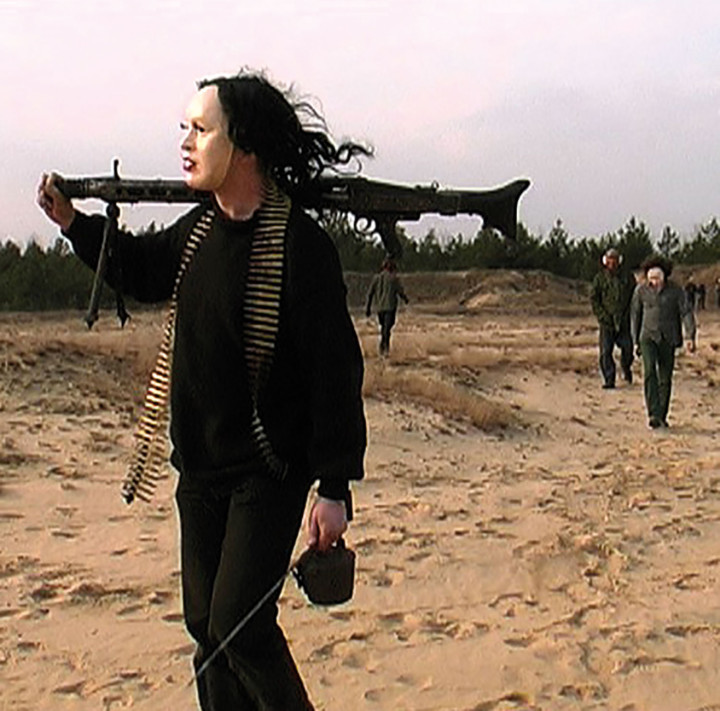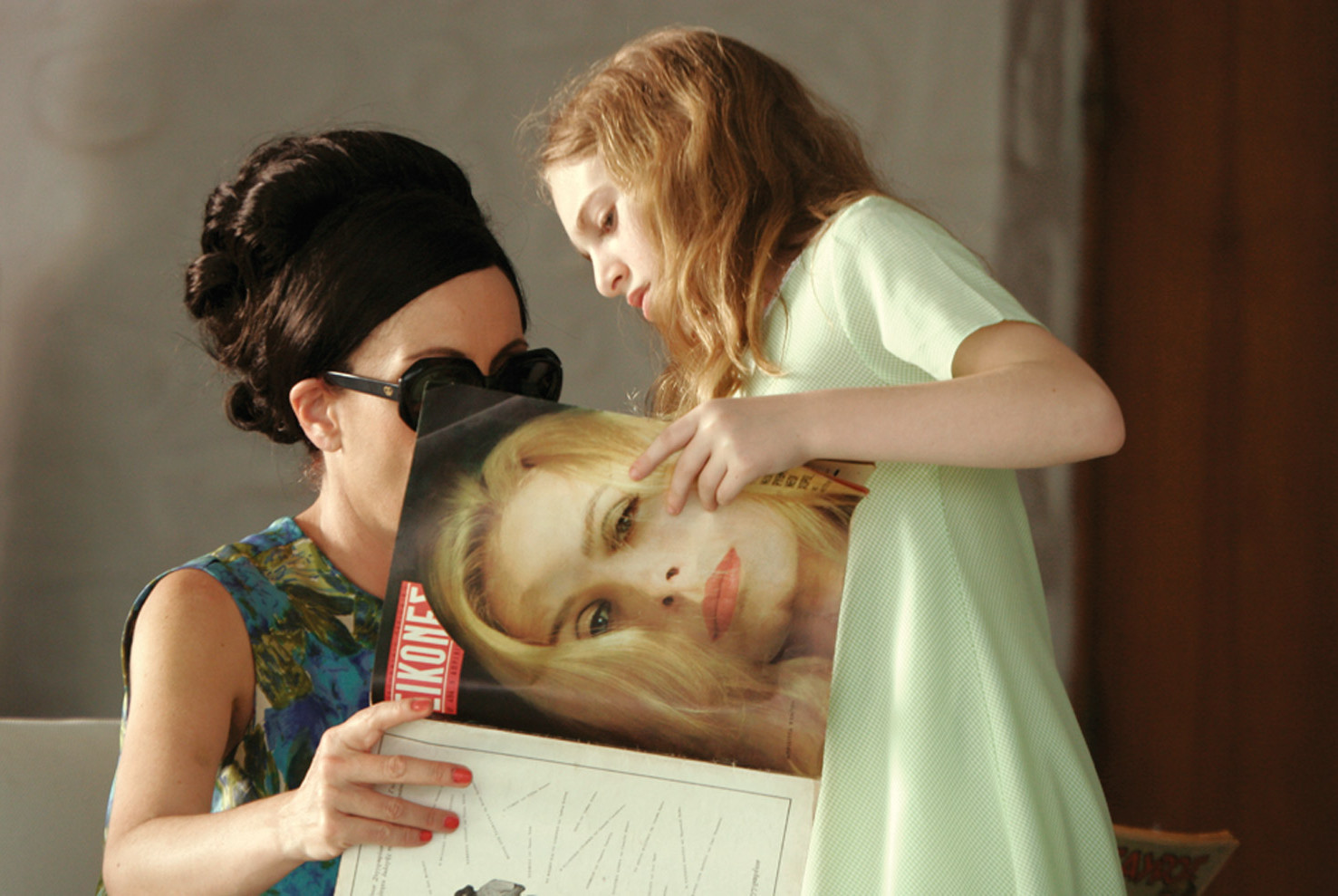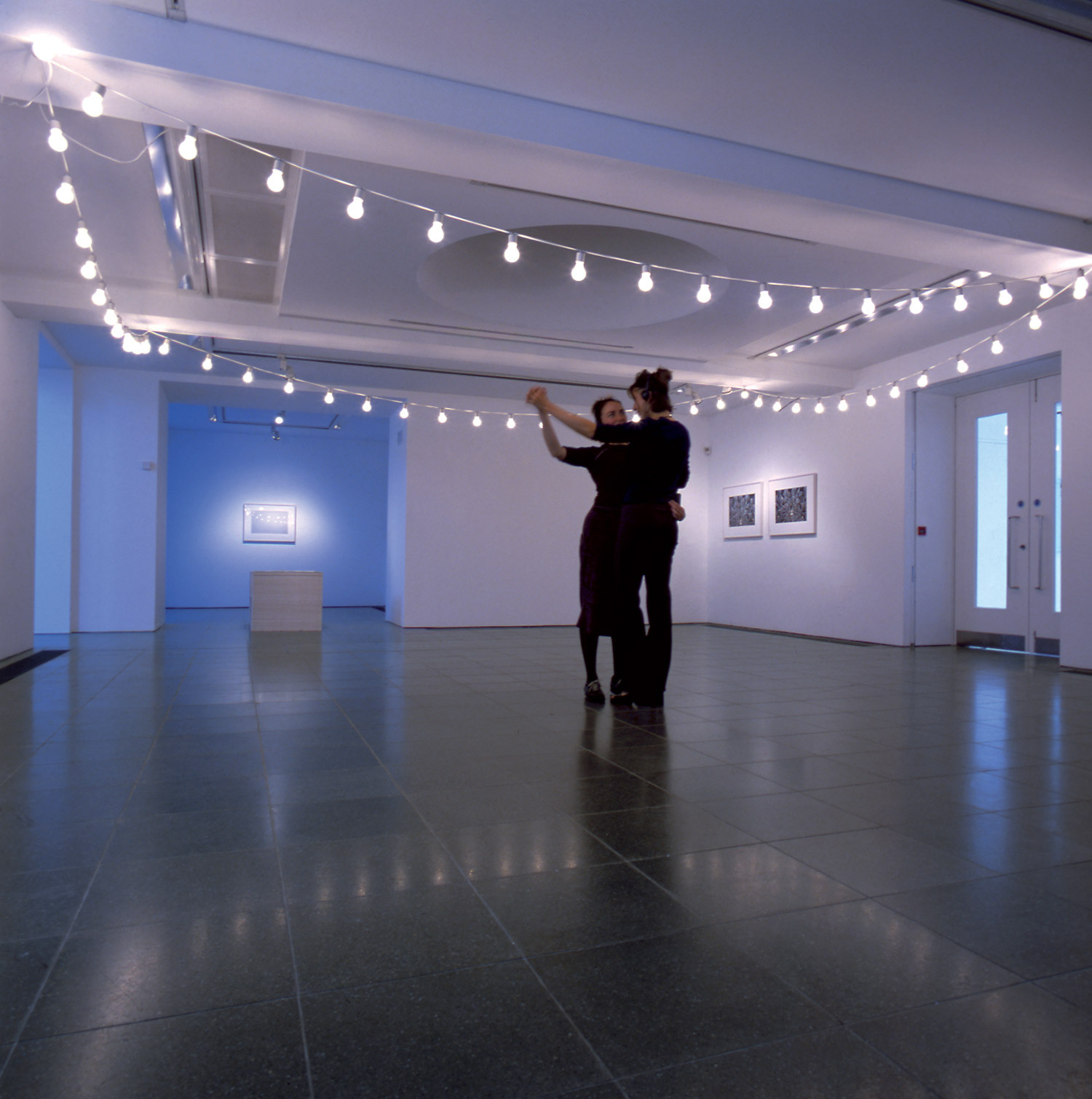
When, at the 1999 Venice Biennale, Katarzyna Kozyra received an honourable mention for her video installation Men’s Bathhouse, a work examining an exclusively male territory while uniting elements of performance and mise-en-scene, most critics noticed only the work’s feminist aspect (a woman’s penetration of an area reserved mostly for men) and/or its scandalizing dimension (candid camerawork and violation of one’s privacy). Such an interpretation seemed to confirm the reception of her earlier works.
Kozyra gained notoriety in 1993 with her degree project, Pyramid of Animals, which, at the time, became a media sensation in Poland, widely discussed by both the daily press and TV talk shows. In a country where a small fraction of the population expressed any interest in contemporary art, that level of interest in itself was uncanny. Why was the work noticed and why did it stir up such an intense debate? Pyramid of Animals was an installation that contained a sculpture made of a stuffed horse, a dog, a cat and a rooster, all mounted one atop the other. One can easily notice the formal reference to the Brothers Grimm story, The Bremen Town Musicians, although the artist replaced the donkey with a horse. The work was accompanied by a single page explication in which the artist described the process of the sculpture’s creation. It was that text, revealing the technique and the intention, that sparked off the greatest controversy. Kozyra admitted that she had selected the animals themselves from living specimens already sent for slaughter; that she had participated in and even filmed the process
of the slaughtering and skinning of the horse (the film also accompanies the sculpture); and that the process of creation and participation in death was equally, if not more, important for her than the final outcome of an aesthetic sculpture. This confession outraged first the Academy professors and then the media and the public. Kozyra received her diploma, but the Association for Polish Artists sent an official protest to both the Academy and the Ministry of Culture. The media launched a hate campaign, accusing the artist of killing animals for decorative purposes, and contemporary art of shock tactics, technical impotence and so on. The morality and
boundaries of art were discussed. Few acknowledged the true message of Pyramid of Animals, which wasn’t a work about animals, but a work about death, about killing, and their significance in present day culture. The artist was telling the viewers that the contemporary culture was a culture of death, that the killing of animals was an everyday occurrence, and, what’s more, that it was commonly accepted, provided it followed certain arbitrary standards.

Kozyra’s successive works seemed to confirm Kozyra’s scandalous image: the 1996 photo installation Olympia, when the artist presented her disease-depleted body in the pose of Manet’s Olympia; the 1997 video installation Women’s Bathhouse, which demonstrated genuine, unposed femininity through a small video camera she smuggled into a Budapest women’s bathhouse; and finally the already mentioned Men’s Bathhouse from 1999, where the artist, complete with a fake penis, enters into this male territory. The image of an artist exploring above all the cultural taboos associated with human corporality and social stereotypes and behaviours. She violates and transgresses them, frequently raising controversy and exposing herself to the criticism of the outraged audience.
The breakthrough — not so much for the artist herself but rather for the reception of her works — came with The Rite of Spring (1999-2002), a video installation based on a reconstruction of Nijinsky’s original choreography for Stravinsky’s ballet. A choreography that, when shown for the first time in early twenty century, caused a scandal and sank the work for its non-dancing, full of jerky, spastic movements. Kozyra translated an excerpt from that choreography into the language of animation, which allowed her to give the role of the Chosen One (so difficult even for professional actors) to old people. Lying on a white floor, naked, with artificial sexual attributes attached (women with penises, men with artificial vaginas), arranged by professional animators, and photographed from above (resulting in over 20 thousand images), they play solo roles or corps de ballet. The video projections were arranged into two circles. In the inner one, three screens showed the soloists dancing the part of the Chosen Victim — a girl that, selected from the crowd, has to dance herself to death to wake up the Earth. In the outer circle, six screens showed the dancing corps de ballet — a crowd of Old Men surrounding the Victim. The viewer stands somewhere in between: between the crowd of the dancing Old Men and the Victim ‘being danced.’
It is in The Rite of Spring that Kozyra’s bond with the stage was shown so literally for the first time. On the other hand, it is an atypical work: Kozyra seems to be the ‘great absentee’ here. Making a fleeting appearance in the film accompanying the Pyramid of Animals (as a witness and the “doer”), posed as Olympia in a hospital bed, visible for a moment adjusting the lens of the hidden camera in the women’s bathhouse, and finally the main protagonist in the Men’s Bathhouse, here, in The Rite of Spring, she is the invisible director. We see her figure in the set documentary — as one of the animators arranging the bodies on the set, participating physically in that deconstruction of dance.

Kozyra’s most recent work, Faces (2005), is focused around the ballet. It is also shown in a similar manner formally — the viewer is surrounded by huge screens which show faces demonstrating extreme emotions: above all, efforts of intense concentration and tension. Clenched mouths, rapidly moving eyeballs, frowning foreheads with trickles of sweat. They are the faces of dancers: classical ones, modern ones, hip-hop dancers, captured doing their showpiece performances, eventually their distorted faces turning into masks. They are filmed in such a way that one does not see their bodies in the projected images. One only sees the faces, which during the actual performance are virtually invisible to the viewers. As in The Rite of Spring, dance itself is being deconstructed here, separated into the individual movements and frames in a process of tedious animation, and then assembled together again, so that in Faces the actor’s body is deconstructed. Until now a singular whole, it becomes visible only fragmentarily. Thrown into a circle of faces, the viewer can watch them while being watched himself.
Kozyra plays with the film convention in the video installation Punishment and Crime (2002). The title is, of course, an inversion of the title of Dostoevsky’s famous novel. To make the film, Kozyra acquainted herself with a group of young people whose hobbies are guns and explosions. They meet in desolate places to indulge in their passions, blasting off their illegally owned guns or explosives. A larger screen shows a film trailer — several minutes of action-packed footage: a shed being blown up, a car exploding, fire, explosions, machine gun fire, flamethrower action. The protagonists wear pin-up girl masks, wigs and necklaces made of bullet shells. Among the voices commenting on the explosions one also hears the artist’s voice. From time to time, slow-motion footage shows the spectacular beauty of their destructive activity, and the viewer feels seduced too. One can grasp the rationale of this activity watching footage on six small screens. Each of the six tapes is an account of over two hours of preparations for the explosions and cannonades shown in the trailer. Construction (the assembling of the shed, the preparation of the car) leads towards deconstruction — destruction. The last monitor shows the punishment. Sunrays illuminate the branches of a tree, and also the dead people hanging from them. Artistic performance merges here with mise-en- scene. What is documentary and what is feature? Are the protagonists men or women? The female principle mixes with the male one. What is true and what is false?

For over two years now Kozyra has been pursuing a project called In Art Dreams Come True, uniting the elements of performance and mise-en-scene, cited in the Venice jury’s verdict on Men’ s Bathhouse. From today’s perspective, this seems to be a far more interesting interpretation trope than ‘provocation’ or ‘feminism.’ Here Kozyra is the director, arranging the space of her own expression, the lead actor, and, at the same time, a material and instrument in the hands of others. The outline of the story is simple: wishing to become a ‘real woman’ and a ‘star,’ the artist puts herself at the disposal of specialists: Gloria Viagra, a Berlin DJ and transvestite representing for Kozyra the ‘real femininity’ (makeup, style and dress), and Maestro, an opera singer giving the artist singing lessons and introducing her to the artificial and conventionalized world of opera. With Gloria, wearing matching makeup, Kozyra goes shopping and frequents nightclubs and galleries. With Maestro, she performs tedious vocal exercises aimed at relaxing the muscles responsible for voice emission. She performs with Gloria in a nightclub and performs a striptease as a birthday gift for her. She performs with Maestro on stage in a theater, singing under his stern supervision Mozart’s and Gounod’s arias, playing out again and again a show of inability and strain. With time, those two worlds start blending, and the mask becomes an essential prop in this theater of transformations and metamorphoses. During the successive transformations, Kozyra changes from an opera diva into the Madonna of Fatima and Maestro plays a cardinal in a rat mask. Kozyra changes into Lou Salome, Maestro enters the role of a dog in a Rilke mask. Those metamorphoses are also watched by the inhabitants of the Tuscan town of Pelago, of Regensburg in Bavaria, and finally by the dogs of Rome, for which the performance, Lou Salome a Roma, is staged. The catalogue of Kozyra’s latest presentation at the CAC Warsaw explains that, “Anarchistic creationism pushes her towards fireworks of mystification and total negation of boundaries, weaving and unweaving of conventions… Her primary inspiration is the mechanism of simultaneous development and destruction, a fascination with the changeability of forms.”





